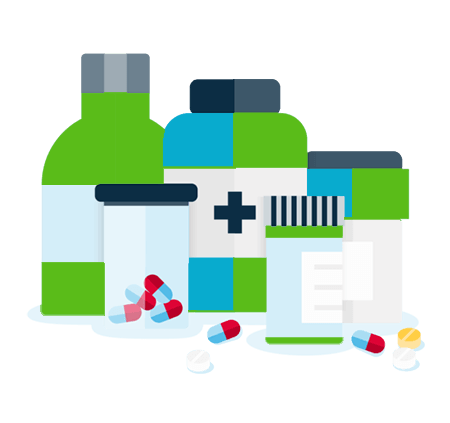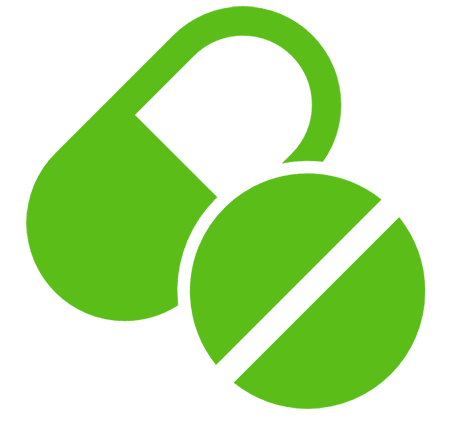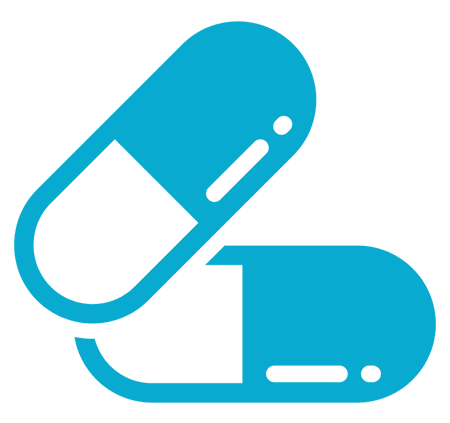Overview
According to a 2015 report from the National Institute on Alcohol Abuse and Alcoholism, there are currently over 15 million people addicted to alcohol--a number that is larger than the entire population of the state of Pennsylvania (approximately 12 million people).
While alcohol dependency is common in America, many people do not seek treatment. Alcoholism can be very destructive, painful, and embarrassing for those who are addicted. Compounding the problem, many people addicted to alcohol find it difficult to share their challenges with their friends and families. Acknowledging that you or a loved one is addicted is a key step toward recovery; however, your body and mind may still be physically and chemically dependent on alcohol.
Fortunately, there are several medications in the United States that have been shown to be highly effective in helping to treat alcoholism. These medications have enabled people to break their chemical dependencies and regain control of their lives. Naltrexone, one such medication, has been shown to be highly effective in treating alcoholism when paired with counseling and dependency treatment programs.
In this article, we will explore what naltrexone is, how it helps treat alcohol addiction, how it works, and whether there are any side-effects that you should be aware of before using it in your recovery. We will also briefly cover two other medications that are commonly prescribed for treating alcohol dependency: disulfiram and acamprosate. However, we go into those medications in further detail in separate articles.
What is naltrexone?

Naltrexone is a medication that has been approved by the United States Food and Drug Administration (FDA) for treating dependencies on alcohol and opioids. You can take naltrexone either orally or through an injection. In cases of treating alcohol dependency, however, most doctors prescribe it to be taken orally.
Naltrexone is one of the following three medications that are approved in the United States for treating alcohol dependence: acamprosate, disulfiram, and naltrexone. Each medication is quite different in how they help you in your recovery from alcohol addiction. Based on your specific needs, your doctor may recommend one of these medications over the others to help you recover from alcoholic dependence.
How is naltrexone used in treating alcoholism?

Naltrexone is used to treat alcohol dependency in combination with counseling, group therapy, and rehabilitation treatment programs. Naltrexone can help you throughout all of the phases of your recovery from alcohol dependence: detoxification, active medical treatment to mitigate cravings and to remap learned behaviors, and ongoing therapy and treatment to maintain sobriety.
While naltrexone will help you recover from your dependence on alcohol, your commitment to your recovery is the key factor in whether you will be successful in the long term. When you begin your recovery, your doctor will likely recommend that you go through a process of detoxification from alcohol before you begin taking naltrexone. Your doctor also might suggest that you join a formal treatment program.
The physical, medical, and emotional support provided through a treatment center or group can make it much easier for you to begin the recovery process. Naltrexone works well in this system, helping to alleviate the physical cravings for alcohol and to block the pleasant, addictive effects associated with consuming alcohol.
The standard dose of naltrexone is one low dose of 50mg capsule per day, depending on your body weight. There’s no need to take naltrexone with food.
How does naltrexone work?

Naltrexone mutes the pleasant effects of opioids by preventing receptors in your brain from taking in those opioids. While alcohol is not an opioid, naltrexone also affects how your brain processes dopamine -- an integral neurotransmitter that is affected by alcohol consumption. Dopamine serves several integral functions: as a neurotransmitter in the brain, a courier for essential chemicals in the central nervous system, and as a regulator of blood pressure (vasodilator). There are a handful of other known functions of dopamine in the body, but the primary way that it affects addiction is when it is serving as a neurotransmitter in the brain.
Dopamine travels through the brain by using several different pathways. One of those routes is through an area of the brain called the mesolimbic pathway. When dopamine is released through this pathway, it causes physiological and neurological responses that are typically associated with pleasure and rewards. While this mechanism does have a valid function in human learning and adaptation (it’s good that our brains reward us with “feel-good” neurotransmitters when we’re doing something that is in the interest of self-preservation), some doctors theorize that many addiction problems are caused by as yet unknown issues in the mesolimbic pathway.
While doctors do know that naltrexone affects both how your brain’s mesolimbic pathway and opioid receptors take up dopamine and opioids, there is not yet any solid body of evidence showing how and why naltrexone works so well for helping alcohol addicts fend off intense cravings for alcohol during withdrawal. However, naltrexone has no known addictive properties and has been shown to be safe and very effective in helping with recovery from alcohol dependence.
-
Other uses for naltrexone
Outside of helping to regulate opioid and alcohol dependence, many studies have shown that naltrexone also has promising positive effects on the following:
General addiction regulation:
For instance, food addiction, sexual addiction, gambling addiction, etc. It has not been shown to affect addiction to nicotine, however.
Moderation of impulse control disorders:
Naltrexone has shown some promise in regulating impulse control problems in individuals that have disorders such borderline personality disorder (BPD). BPD also is characterized by addictive behavior that is difficult for the patient to manage.
Weight loss:
The FDA has approved a combination of the antidepressant bupropion and naltrexone for promoting weight loss. Studies have in fact shown a positive correlation between the medication and weight management.
Relief from dissociative disorders:
Many patients have had positive experiences with naltrexone relieving symptoms of dissociation, such as those caused by dissociative identity disorder (DID).
Pain and inflammation management:
Preliminary studies have shown that patients have experienced reduction in their pain and symptoms of Crohn's disease and fibromyalgia.
It’s clear that there are many things yet to learn about the positive effects of naltrexone on behavior and pain regulation. It’s likely that further research into these areas of the brain will yield valuable insights into how emotion, mood, inflammation, and impulse regulation works.
-
Using naltrexone in recovery for alcohol dependence
While naltrexone does aid in addiction recovery, it is not a cure-all for alcoholism. You must first be motivated and truly want to end your dependency on alcohol in order for naltrexone to be most effective. Joining a structured treatment program and regularly attending counseling sessions will greatly aid in your recovery from alcohol dependency.
How does naltrexone differ from other medications?
Three medications are currently approved for treating alcohol addiction in the United States: naltrexone, disulfiram, and acamprosate. We have touched on what naltrexone is and how it works so far, but how do the others work? (We go into deeper detail in our other articles on these medications. This section will give you a basic idea of how each differs from the others.)
Naltrexone
An oral medication that significantly reduces your body’s ability to feel pleasure from consuming alcohol. Any alcohol you consume while taking naltrexone, however, will still negatively impact your motor and cognitive skills while you are intoxicated.
Acamprosate
An oral medication that is believed to affect the GABA receptors of your neurons and to enable your cells’ metabolism return to normal after prolonged alcohol dependency.
Disulfiram
An oral medication that causes you to experience extreme physical discomfort if and when you consume alcohol. Common alcohol interactions with this medication include: flushing, nausea, sweating, and vomiting. This medication acts as a physical deterrent to prevent you from consuming alcohol.
Side effects of naltrexone
Naltrexone is quickly effective, and you should begin to notice its effects within one week of beginning your treatment. Most doctors will prescribe a low dose of naltrexone (50 mg per day). Low doses have been shown to be effective in curbing cravings for alcohol both during withdrawal and over time.
When you first begin taking naltrexone, your risk of relapse on alcohol dependence is at its highest. In the first few weeks of your recovery, be sure to work closely with your doctor, counselor, and any therapy or treatment groups. They will be very useful in helping you track your cravings and to keep them in check.
Ensure that you regularly take your dose of naltrexone. However, if you do accidentally miss a dose and it’s close to the time for your next dose, you can skip the previous dose and just wait for the one that is upcoming. If you find yourself falling into a pattern where you are missing doses, be sure to speak with your doctor and counselor to see if there is anything can be adjusted in your treatment to help promote your success.
-
How your body processes naltrexone
When you take medications like naltrexone, your body processes them through a standard process of absorption, distribution, metabolism, and then excretion. For example, for a pill that you take orally, the medicine is first broken down in the stomach and then absorbed through your intestines. From there, your body distributes the medication throughout your system through your bloodstream. Most medications are then broken down by enzymes in the liver and then excreted through your urine and feces.
-
More common side effects
There are some common side effects for naltrexone, which most often dissipate within a week or two of beginning treatment. Those symptoms include: nervousness, anxiety, muscle or joint pain, and stomach discomfort. In high doses, naltrexone can cause liver damage. Even for low doses of naltrexone, your physician will likely monitor your liver function over time to ensure that you’re remaining healthy. For patients with existing liver damage, acamprosate might be a better choice for aiding you in your recovery from alcohol dependence since it is not metabolised in the liver. Make sure that you have a careful and open conversation with your doctor when considering your medical treatment.
-
Less common and severe side effects
Rarely, naltrexone can cause more serious side effects. Let your doctor know immediately if you experience any of the following symptoms while taking naltrexone: hallucinations, stomach pain, confusion, diarrhea, drowsiness, and blurred vision.
-
Interactions
There are no known major interactions for naltrexone and other medications, and it is generally considered to be safe to take naltrexone with serotonin reuptake inhibitors (SSRIs) and with acamprosate and disulfiram. Doctors also have not identified any known interaction between naltrexone and alcohol. However, if you do consume alcohol during your recovery, let your doctor and counselor know so that they can consider changes in your treatment to promote abstinence from alcohol.
Summary
Medications like naltrexone help promote a healthy recovery from alcohol addiction, providing a more predictable experience and enabling you to be successful in maintaining your abstinence from alcohol in the long term. Combining regular doses of naltrexone with a solid support system can help you gain control over your addiction, recover from it, and begin exploring the open world of unlimited possibilities that lay before you.
Sources
-
https://medlineplus.gov/druginfo/meds/a685041.html
-
https://www.samhsa.gov/medication-assisted-treatment/treatment/naltrexone
-
https://www.niaaa.nih.gov/alcohol-health/overview-alcohol-consumption/alcohol-facts-and-statistics
-
https://www.ncbi.nlm.nih.gov/pmc/articles/PMC3962576/

